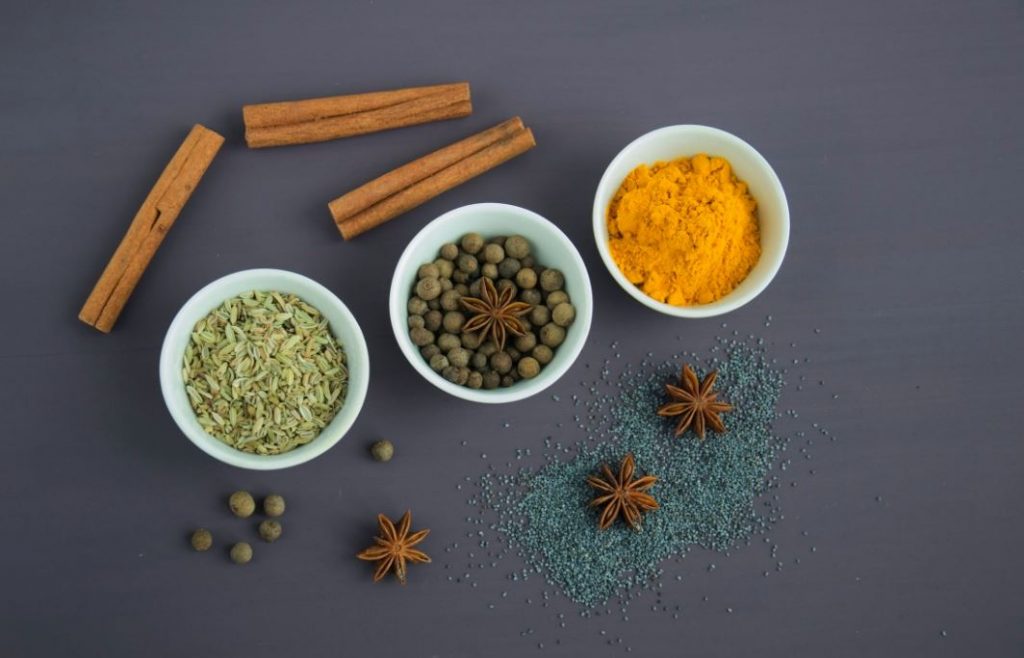
Dry roast spices are frequently called for in many popular recipes. There are several techniques to enhance the aromas of your spice to assure they deliver a punch.
Dry roasting will change your spices, bringing out their flavors and enriching the final meal.
Why to Dry Roast the Spices?
The underlying flavor of spices transforms when they are dry roasted. The first and most striking aromatics cook-off, leaving smaller flavor components to recombine.
Compared to raw spice, the dry roasted spice develops new flavors and fragrances that are stronger and deeper. Spices include two kinds of natural oils. The non-volatile oils are made up of a group of oleoresins.
Oleoresins provide the spice’s fundamental scent. Spices contain volatile oils as well. If you dry roast spices, you seal in and intensify these flavors.
On the other hand, dry roasting the spices will remove moisture from the spices, which will enhance the shelf life of the spices.
What Spices can be Dry Roasted?
Roasting spices can be done with either powder or whole spices. Many people, including me, like to roast the whole spices. This boosts the effectiveness of the spices and their scent.
Whole spices such as cloves, cumin seeds, coriander, fenugreek, cardamom, ginger, and cinnamon, can be roasted to improve their flavor and scent.
When roasted, cardamom, ginger, and cinnamon have a sweeter flavor. On the other hand, coriander takes on a zesty and pleasant flavor.
Dry roasting is also used to enhance the crunchiness of nuts such as raisins, cashews, nutmegs, and almonds.
How to Dry Roast the Spices?
Step 1: Choose the spice for dry roasting
Select and prepare the spices that you wish to dry roast. You can dry roast the whole spices or even powdered spices.
Before dry roasting the whole spices, make sure to clean them properly. Clean them by removing the small debris and inspecting and removing the worms and larva present in the spices.
Also, you can shell the spices like cardamom before roasting them.
Step 2: Start the roasting procedure

Preheat a heavy bottom pan in medium flame. Put the spices you want to roast in the pan and reduce the heat to low, or you can keep it medium.
Stir the spices constantly with a wooden spoon or spatula to distribute the heat evenly among all the spices.
The time required to roast the spices depend on the type of spice being roasted, the supplied heat, and the type and material of the pan.
Step 3: Complete the dry roasting of spices

Constantly observe the spices when they are being roasted.
They are done when the spices smell rich and full-bodied and turn a bit deeper color. They’ll be aromatic as soon as they are perfectly roasted, but give them a few minutes to brown, and the scent will fill the air.
The idea is to roast them all the way through, not just on the surface but without burning them. This step normally takes only a few minutes. As the entire spices roast, you may hear a popping sound.
Step 4: Cool the spices
When one batch of the spices is ready, turn the heat to low and transfer the roasted spices into a big bowl. Allow the spices to cool naturally.
After cooling, your roasted spices are ready.
Step 5: Grind the spices (Optional)
Most recipes use the finely ground form of roasted spices. Thus, it is recommended to blend the spices to a fine powder using an electric grinder or by using mortar and pestle.
Make sure to store the whole or powdered spice in an airtight vessel to preserve its taste and aroma.
Quick tips for Dry Roasting the Spices
- Because various spices roast at various rates, it’s preferable to roast them one type of spice at a time to ensure they’re evenly roasted.
- Maintain a continuous and moderate flame, and scatter the spices evenly in the pan to properly disperse the heat.
- Keep an eye on the spices while roasting and stir continually, or they will burn and become bitter.
- Keep a close eye on the spices since they may quickly go from aromatic to burn. If you burn the spices, you’ll have to toss them away and start over since they’ll make the food bitter.
Can I Roast Spices that have been ground into Powder?
I don’t recommend roasting powdered spices. This is because spices have a much larger surface area when powdered, which allows volatile aromatics to escape significantly more quickly and makes the spices more prone to burning.
However, you can roast them under very low heat.
Which Cuisines make use of Dry-Roasted Masalas?
The answer is almost everything. Garam masala may be used on virtually any Indian or Nepalese cuisines, although it shines most in meat recipes.
Chili-based spice mixes (curry powder) may be utilized in any recipe, functioning as the flavor basis. It’s used for vegetables, meat, and legumes, though most commonly associated with meats.
On the other hand, individually roasted spices give you the freedom to add anything you want as you’re cooking your food on the stove.
It’s crucial to understand that not all meals call for garam masala, that not all dishes call for chili-based mixes, and that not all dishes call for individually ground spices—but some will call for all three.

